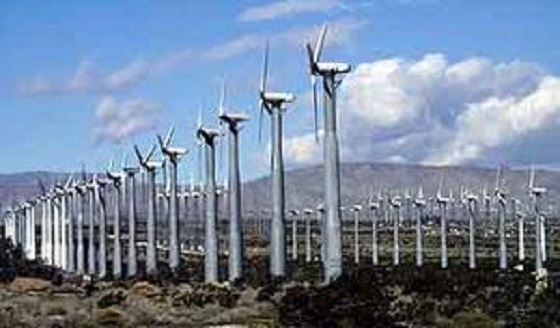Business
The Problem With Trudeau’s Fiscal Responsibility Message
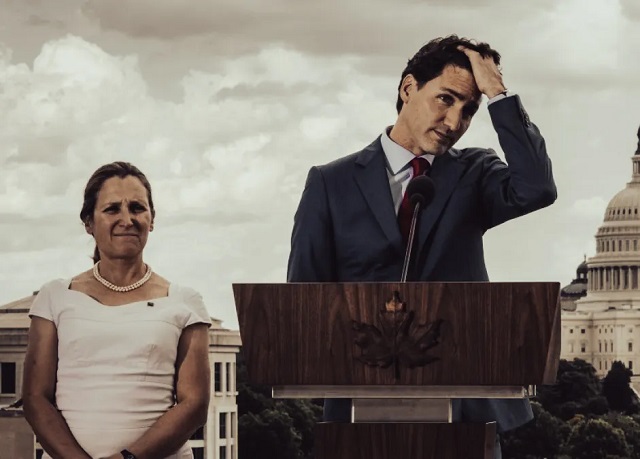
From the Canadian Taxpayers Federation
By Franco Terrazzano
This year’s interest charges will cost taxpayers more than $46 billion. That’s almost $4 billion every month that’s not going to improve services or lower taxes. It’s also a cost of more than $1,000 for every Canadian.
There’s only one problem with the federal government’s messaging about saving money: the feds aren’t actually saving money.
“The foundation of our Fall Economic Statement is our responsible fiscal plan,” said Finance Minister Chrystia Freeland.
The mid-year budget update shows the government increasing spending by $15 billion this year. A far cry from Freeland’s March promise to find “savings of $15.4 billion over the next five years.”
Next year, the government will increase spending by $30 billion. And that comes on top of an already ballooned baseline.
The feds spent all-time highs before the pandemic. That means Prime Minister Justin Trudeau was spending more before the pandemic than the feds did during any single year during World War II, even after accounting for inflation and population growth.
Freeland is trying to put Canadians’ minds at ease by claiming her deficits are “modest.” Canadians have heard this before.
When running for prime minister in 2015, Trudeau promised to run a few “modest” deficits of less than $10 billion before balancing the budget in 2019. Trudeau blew that balanced budget promise by a “modest” $20 billion.
This year’s deficit is projected to hit $40 billion. Deficits in 2024 and 2025 are both projected to be $38 billion.
Is this the new modest? Four times larger than the “modest” deficits Trudeau first promised?
The mid-year budget update proves this government has no idea how to balance a budget.
In fact, the only mention of a balanced budget in Ottawa comes from the Parliamentary Budget Officer, who forecasts the next balanced budget will happen in 2035. But that relies on the economy growing every year, relatively low interest rates and no new spending.
A government too incompetent to balance the budget means Canadians are paying dearly just to service the debt.
This year’s interest charges will cost taxpayers more than $46 billion. That’s almost $4 billion every month that’s not going to improve services or lower taxes. It’s also a cost of more than $1,000 for every Canadian.
Next year, debt interest charges will surpass federal health transfers to the provinces. Soon, every penny collected from the GST will go toward servicing the debt.
As bad as the budget is, the government could keep the ship from sinking with modest spending restraint.
The government could balance the budget next year by using its own projected program spending from two budget updates ago. Instead of running a $38-billion deficit next year, taxpayers would have a $1-billion surplus if Freeland just stuck to the spending plan she created in 2021.
This highlights the root of Trudeau’s spending problem – the ratchet effect. Almost every budget document released by this government drastically increases spending.
The mid-year budget update in 2019 first projected spending in 2024 to be $421 billion. This year’s budget update shows the government will spend $519 billion in 2024.
This government’s muscle for fiscal responsibility has atrophied.
MPs from all political parties can’t help themselves from taking a pay raise every year – regardless of the struggles their constituents endure. The prime minister can’t help but spend $61,000 on Manhattan hotel rooms during a two-day anti-poverty summit.
No one in government is willing to end the hundreds of millions in bureaucratic bonuses, despite departments consistently meeting less than half of their own performance targets.
The Liberals are also unwilling to take the air out of the ballooning bureaucracy, which increased by 98,000 employees since they took power. That’s almost 40 per cent more federal employees. The bureaucracy currently consumes half of every tax dollar used in day-to-day spending.
No party in the House of Commons is willing to oppose the more than $43 billion taxpayers are being forced to give multinational corporations to build battery plants.
This government hasn’t shown one iota of fiscal restraint. In fact, the government appears to be trying its best to run up the red ink. Fortunately for taxpayers, it would only take modest spending restraint for a serious government to bring the books back into black.
Franco Terrazzano is the Federal Director of the Canadian Taxpayers Federation
Business
Saskatchewan becomes first Canadian province to fully eliminate carbon tax
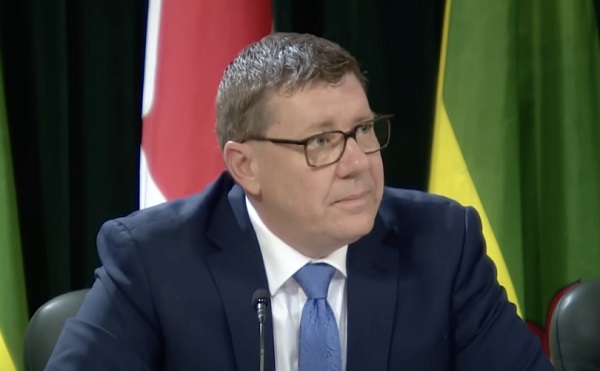
From LifeSiteNews
Saskatchewan has become the first Canadian province to free itself entirely of the carbon tax.
On March 27, Saskatchewan Premier Scott Moe announced the removal of the provincial industrial carbon tax beginning April 1, boosting the province’s industry and making Saskatchewan the first carbon tax free province.
Under Moe’s direction, Saskatchewan has dropped the industrial carbon tax which he says will allow Saskatchewan to thrive under a “tariff environment.”
“I would hope that all of the parties running in the federal election would agree with those objectives and allow the provinces to regulate in this area without imposing the federal backstop,” he continued.
The removal of the tax is estimated to save Saskatchewan residents up to 18 cents a liter in gas prices.
The removal of the tax will take place on April 1, the same day the consumer carbon tax will reduce to 0 percent under Prime Minister Mark Carney’s direction. Notably, Carney did not scrap the carbon tax legislation: he just reduced its current rate to zero. This means it could come back at any time.
Furthermore, while Carney has dropped the consumer carbon tax, he has previously revealed that he wishes to implement a corporation carbon tax, the effects of which many argued would trickle down to all Canadians.
The Saskatchewan Association of Rural Municipalities (SARM) celebrated Moe’s move, noting that the carbon tax was especially difficult on farmers.
“I think the carbon tax has been in place for approximately six years now coming up in April and the cost keeps going up every year,” SARM president Bill Huber said.
“It puts our farming community and our business people in rural municipalities at a competitive disadvantage, having to pay this and compete on the world stage,” he continued.
“We’ve got a carbon tax on power — and that’s going to be gone now — and propane and natural gas and we use them more and more every year, with grain drying and different things in our farming operations,” he explained.
“I know most producers that have grain drying systems have three-phase power. If they haven’t got natural gas, they have propane to fire those dryers. And that cost goes on and on at a high level, and it’s made us more noncompetitive on a world stage,” Huber decalred.
The carbon tax is wildly unpopular and blamed for the rising cost of living throughout Canada. Currently, Canadians living in provinces under the federal carbon pricing scheme pay $80 per tonne.
Automotive
Electric cars just another poor climate policy

From the Fraser Institute
The electric car is widely seen as a symbol of a simple, clean solution to climate change. In reality, it’s inefficient, reliant on massive subsidies, and leaves behind a trail of pollution and death that is seldom acknowledged.
We are constantly reminded by climate activists and politicians that electric cars are cleaner, cheaper, and better. Canada and many other countries have promised to prohibit the sale of new gas and diesel cars within a decade. But if electric cars are really so good, why would we need to ban the alternatives?
And why has Canada needed to subsidize each electric car with a minimum $5,000 from the federal government and more from provincial governments to get them bought? Many people are not sold on the idea of an electric car because they worry about having to plan out where and when to recharge. They don’t want to wait for an uncomfortable amount of time while recharging; they don’t want to pay significantly more for the electric car and then see its used-car value decline much faster. For people not privileged to own their own house, recharging is a real challenge. Surveys show that only 15 per cent of Canadians and 11 per cent of Americans want to buy an electric car.
The main environmental selling point of an electric car is that it doesn’t pollute. It is true that its engine doesn’t produce any CO₂ while driving, but it still emits carbon in other ways. Manufacturing the car generates emissions—especially producing the battery which requires a large amount of energy, mostly achieved with coal in China. So even when an electric car is being recharged with clean power in BC, over its lifetime it will emit about one-third of an equivalent gasoline car. When recharged in Alberta, it will emit almost three-quarters.
In some parts of the world, like India, so much of the power comes from coal that electric cars end up emitting more CO₂ than gasoline cars. Across the world, on average, the International Energy Agency estimates that an electric car using the global average mix of power sources over its lifetime will emit nearly half as much CO₂ as a gasoline-driven car, saving about 22 tonnes of CO₂.
But using an electric car to cut emissions is incredibly ineffective. On America’s longest-established carbon trading system, you could buy 22 tonnes of carbon emission cuts for about $660 (US$460). Yet, Ottawa is subsidizing every electric car to the tune of $5,000 or nearly ten times as much, which increases even more if provincial subsidies are included. And since about half of those electrical vehicles would have been bought anyway, it is likely that Canada has spent nearly twenty-times too much cutting CO₂ with electric cars than it could have. To put it differently, Canada could have cut twenty-times more CO₂ for the same amount of money.
Moreover, all these estimates assume that electric cars are driven as far as gasoline cars. They are not. In the US, nine-in-ten households with an electric car actually have one, two or more non-electric cars, with most including an SUV, truck or minivan. Moreover, the electric car is usually driven less than half as much as the other vehicles, which means the CO₂ emission reduction is much smaller. Subsidized electric cars are typically a ‘second’ car for rich people to show off their environmental credentials.
Electric cars are also 320–440 kilograms heavier than equivalent gasoline cars because of their enormous batteries. This means they will wear down roads faster, and cost societies more. They will also cause more air pollution by shredding more particulates from tire and road wear along with their brakes. Now, gasoline cars also pollute through combustion, but electric cars in total pollute more, both from tire and road wear and from forcing more power stations online, often the most polluting ones. The latest meta-study shows that overall electric cars are worse on particulate air pollution. Another study found that in two-thirds of US states, electric cars cause more of the most dangerous particulate air pollution than gasoline-powered cars.
These heavy electric cars are also more dangerous when involved in accidents, because heavy cars more often kill the other party. A study in Nature shows that in total, heavier electric cars will cause so many more deaths that the toll could outweigh the total climate benefits from reduced CO₂ emissions.
Many pundits suggest electric car sales will dominate gasoline cars within a few decades, but the reality is starkly different. A 2023-estimate from the Biden Administration shows that even in 2050, more than two-thirds of all cars globally will still be powered by gas or diesel.
Source: US Energy Information Administration, reference scenario, October 2023
Fossil fuel cars, vast majority is gasoline, also some diesel, all light duty vehicles, the remaining % is mostly LPG.
Electric vehicles will only take over when innovation has made them better and cheaper for real. For now, electric cars run not mostly on electricity but on bad policy and subsidies, costing hundreds of billions of dollars, blocking consumers from choosing the cars they want, and achieving virtually nothing for climate change.
-

 2025 Federal Election2 days ago
2025 Federal Election2 days agoJoe Tay Says He Contacted RCMP for Protection, Demands Carney Fire MP Over “Bounty” Remark
-

 2025 Federal Election2 days ago
2025 Federal Election2 days agoHong Kong-Canadian Groups Demand PM Carney Drop Liberal Candidate Over “Bounty” Remark Supporting CCP Repression
-

 2025 Federal Election2 days ago
2025 Federal Election2 days agoPoilievre To Create ‘Canada First’ National Energy Corridor
-
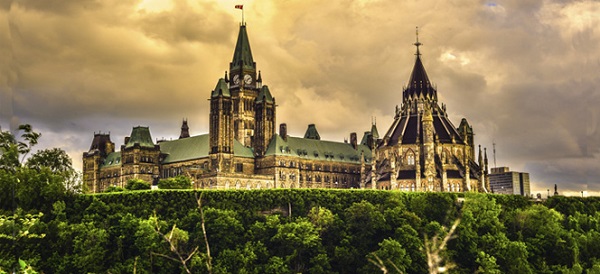
 2025 Federal Election2 days ago
2025 Federal Election2 days agoAlcohol tax and MP pay hike tomorrow (April 1)
-
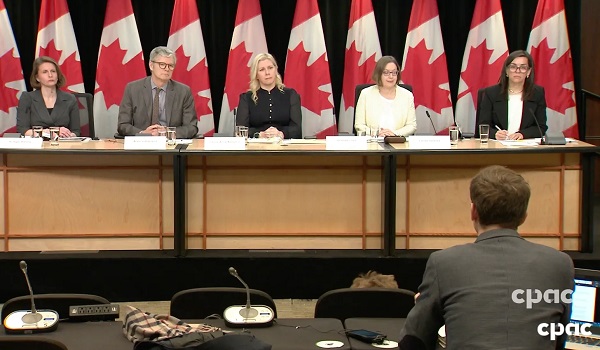
 2025 Federal Election2 days ago
2025 Federal Election2 days agoChina Election Interference – Parties Received Security Briefing Days Ago as SITE Monitors Threats to Conservative Candidate Joe Tay
-

 2025 Federal Election2 days ago
2025 Federal Election2 days agoFixing Canada’s immigration system should be next government’s top priority
-

 2025 Federal Election1 day ago
2025 Federal Election1 day agoPoilievre, Conservatives receive election endorsement from large Canadian trade union
-

 2025 Federal Election1 day ago
2025 Federal Election1 day agoLondon-Based Human Rights Group Urges RCMP to Investigate Liberal MP for Possible Counselling of Kidnapping




